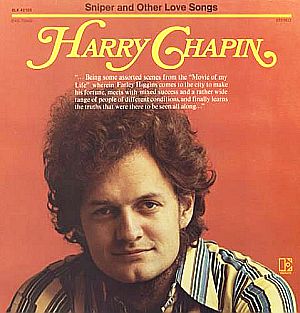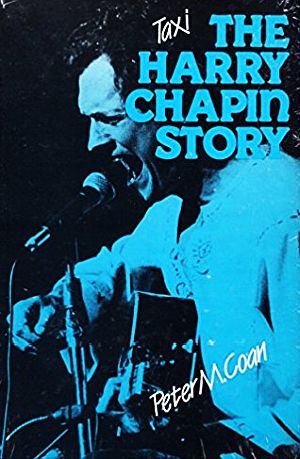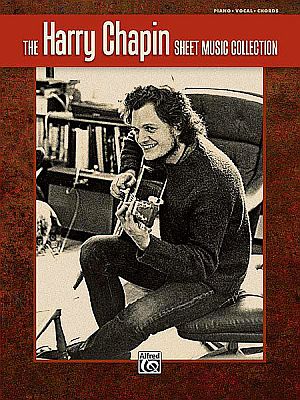
A taxi cab at work on the nighttime streets of some anonymous city.
Harry Chapin was then a folk rock singer-songwriter who had been playing New York City nightclubs with his small quartet and receiving some local notice. But nationally, he was virtually unknown.
On Carson’s show that night, Chapin performed his song, “Taxi,” about a cab driver who picks up a female passenger whom he discovers, after a few looks in his rear-view mirror, is a long lost love from his youth.
“Taxi” is a song filled with hard-luck poignancy, life-lived serendipity, and what-might-have-beens. And on the Carson show that night, Chapin’s performance wowed the late night audience. His appearance was followed by viewer phone calls and telegrams sent to NBC praising the performance.
In fact, at the time, Johnny Carson himself was so taken with Chapin’s performance that he invited him back to perform the following night. Reportedly, it was the first time in the show’s history that Carson had brought a performer back the very next night for an encore performance. But apparently, the chemistry with Carson was for real, as during his career, Chapin would appear on Carson’s show more than a dozen times.
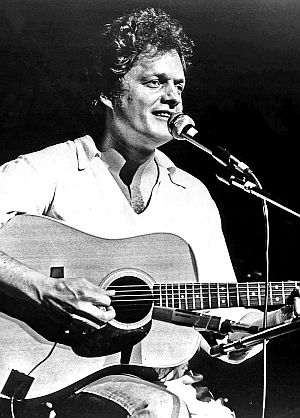
Harry Chapin performing in the 1970s.
Music Player
“Taxi” – Harry Chapin
(scroll down for lyrics)
Only months before, in November 1971, Chapin had signed a big recording contract after something of a bidding war had broken out over signing him between Columbia’s Clive Davis and Elektra’s Jac Holzman. Elektra won in the end, and Chapin got free recording time as part of his deal.
By March 1972, Chapin released Heads & Tales, his first studio album. It included “Taxi,” and both the album and single had successful chart runs for about six months, each selling more than 1 million copies. Chapin also had a supporter in WMEX-Boston radio DJ, Jim Connors, who helped push “Taxi” up the pop charts – lasting 16 weeks on the Billboard Hot 100, peaking at No.24. Billboard would also rank the song at No. 85 for the year of 1972.
But “Taxi” had not been expected to do well, especially since it ran nearly seven minutes in playing length (6:47), while most A.M. radio stations at the time rarely used recordings of more than two minutes. But progressive FM radio stations were coming into vogue at the time, exploring lengthier musical formats and even entire albums, a development which also helped “Taxi” get air time. In any case, “Taxi” sent Chapin on his way, providing huge career momentum. And even today, nearly 50 years later, “Taxi” still resonates with many listeners. Below are the song’s lyrics along with some narrative comment.
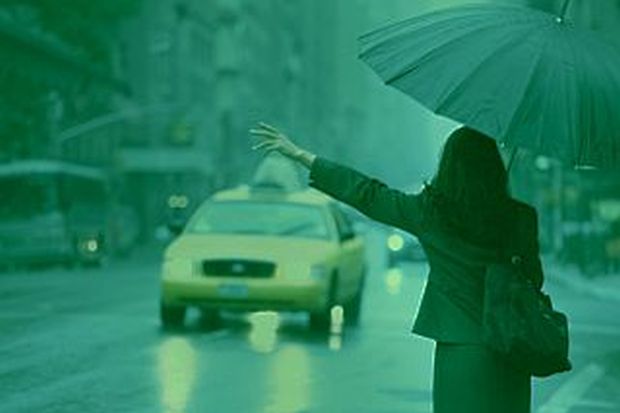
Harry Chapin's song "Taxi" begins with a lady hailing a cab in a San Francisco rain. Click for digital version of song.
|
“Taxi” It was raining hard in ‘Frisco Oh, where you going to, my lady blue Something about her was familiar It took a while, but she looked in the mirror And she said, “How are you Harry?” It was somewhere in a fairy tale You see, she was gonna be an actress Whoa, I’ve got something inside me Oh, I’ve got something inside me Baby’s so high that she’s skying There was not much more for us to talk about And she said we must get together Well, another man might have been angry And she walked away in silence You see, she was gonna be an actress And here, she’s acting happy I go flying so high, when I’m stoned… |
The song features its cab driver narrator in San Francisco coming to the end of a long rainy night, and needing one more fare before calling it quits for the evening.
He picks up a lady who has waved him down at a stop light. She is dressed in an evening gown. When she enters the cab, he offers a sympathetic comment about the rain ruining her gown. She simply stares out the window and gives him the address.
As they drive, he checks her out in the rear-view mirror, then thinks he’s sure he’s seen her face before. He then asks her the “don’t-I-know-you-from- somewhere” question, to which she replies with an air of certainty: “I’m sure you’re mistaken.”
But as they drive on and sit in silence for a time, she looks into the mirror to see his face, and then views the cab-driver license posted on the back of the front seat with his name, photo, and license number.
Still glimpsing her occasionally in his rear-view mirror, he notices a slight smile of discovery coming across her face, noting, as narrator: “It was a sad smile, just the same.”
Finally, she acknowledges her discovery and greets him: “How are you Harry?” to which he replies, “How are you Sue?,” having also remembered who she was: “Through the too many miles, and the too little smiles, I still remember you.”
Then, continuing as narrator, he fills in his listeners with the Harry-and-Sue back story, as in their younger years, they had dated in an earlier “fairy tale,” where they learned love in a back seat of his Dodge. And during those years, they each had big dreams: “She was gonna be an actress, and I was gonna learn to fly. She took off to find the footlights, and I took off to find the sky.”
Then Harry the cab driver appears to begin a life assessment of sorts – and it’s not clear whether this is just his own “talking-to-himself” private assessment, or something that he and his lost love are having a conversation about during the cab ride — catching up a bit, to learn what’s gone on in each other’s lives?
In any case, as for himself, Harry believes he still has “something inside” and the desire and drive to realize his dream. What you see now, he explains of his cab driver gig, is not the final act — “just tiding me over.”
And as for the lady of his dreams, well she appears to be doing well, at least from outward appearances. Yet there’s some uncertainty there. She’s flying high, but on a tightrope of sorts, afraid to fall. (Musically, this part is performed in falsetto by Chapin’s bass player, John Wallace). But why is she crying? “`Cause [inside] she’s dying; aren’t we all.”
Here is the frustration of what people feel when they realize they will never reach their dreams, though they still have the desire; but that life has now become something less than what they had hoped for.
“There was not much more for us to talk about,” says the cabbie narrator, nearing the end of the ride, acknowledging that “whatever we had once was gone.” And although at ride’s end Sue says “we must get together,” Harry knows “it would never be arranged.”
Upon departing the cab, she covers the $2.50 fare with a $20 bill, saying: “Harry, keep the change” – which didn’t provoke anger or hurt in Harry, only regret – “another man never would have let her go.”
As she walks away to her home, Harry thinks somehow that they had both gotten what they asked for those many years ago, when she set out to be an actress, and he was going to learn to fly. For she is now “acting happy inside her handsome home,” and Harry, well he’s now “flying” in his taxi, “taking tips, and getting stoned… I go flying so high, when I’m stoned.”
When Chapin was asked at one point if the song was true, he replied:
“It’s emotionally true, if not literally true. I’ve been in the film business on and off for a lot of years, and wasn’t doing well at one point. So I went out and got a hack [taxi cab] license…, and during the month that I was waiting for it to come through, I heard that an old girlfriend of mine had gotten married and instead of becoming an actress she married a rich guy. I envisioned some night I’d be driving a cab in the big city streets and this lady would get in the back, and I’d turn and look at her and she’d look at me and know we both sold out our dreams.”

Grainy photo of Clare Alden MacIntyre in later life.
Harry and Clare had met as summer camp counselors in the early 1960s. She was the daughter of Malcolm MacIntyre, a lawyer and corporate executive who headed up Eastern Airlines from 1959 to 1963.
Clare’s parents, in fact, weren’t wild about the budding relationship between their daughter and Harry Chapin. According to Tom, Clare’s father viewed Harry as something of a ne’er-do-well, not worthy of his daughter’s affections.
Still, Harry and Clare had an on-and-off romance in the early 1960s; they dated for two years despite Harry living in Brooklyn, Clare living in Scarsdale. But there was one difference in how they traveled locally in those days, according to brother Tom.”We took subways,” explained Tom of he and Harry. “But [Clare’s] father and mother refused to let her take subways. They always gave her money to take a taxi.”
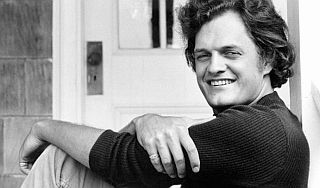
Harry Chapin, Elektra promotional photo.
As it turned out, Harry didn’t become a cab driver nor did he have to confront Clare getting into his cab, as other job offers came his way. But he never discarded the idea of Clare getting into his cab, and some years later, turned it into the song, “Taxi,” as New York became San Francisco and Clare became Sue. And the rest is history, as they say. Billboard ranked “Taxi” as the 85th top song of the year. “Taxi” also earned Chapin a Grammy nomination for Best New Artist of the Year. Yet, according to Peter Coan, Harry Chapin’s biographer, Chapin never completely got over Clare MacIntyre: “She was the love of his life.”
Meanwhile, through the 1970s, following the success of “Taxi” and his first album, Harry Chapin remained popular, recording a number of other “story songs” and successful albums.His second album, Sniper and Other Love Songs, released in 1972, included two other popular Chapin songs: “Sunday Morning Sunshine” and “Circle.”
Chapin’s third album, Short Stories, came out in 1973 and spawned the million-selling hit, “W.O.L.D.,” using the call letters for a radio station who’s devoted disc jockey has neglected his family, the song penned from the wife’s perspective.
“W.O.L.D.” was inspired by an American radio personality from Boston who Chapin knew, with the song’s story focused on a workaholic-damaged marriage.
“W.O.L.D.” became a top 40 hit in 1974 on the Billboard Hot 100, top 10 in Canada, and in the Top 20 in various other countries.
Other songs from the Short Stories album, but not released as singles, include: “Mr. Tanner,” “Mail Order Annie,” and “They Call Her Easy.”
In 1974, Chapin released, Verities and Balderdash, his fourth album, which sold 2.5 million units, largely due to the single, “Cat’s in the Cradle,” his No. 1 hit.
Music Player
“Cat’s in The Cradle”
This song is about a father who didn’t find time for his son during his childhood, and finds as he grows older, his son has become “just like me,” and does not spend time with his aging father. “Cat’s in The Cradle” earned Chapin another Grammy nomination for Best Male Pop Vocal Performance. He was also inducted into the Grammy Hall of Fame.
Verities and Balderdash peaked at No. 4 on the Billboard 200. The album’s follow-up single, “I Wanna Learn a Love Song,” charted at No. 7 on the Billboard Adult Contemporary chart. The song is a true story about how he met his wife, Sandra Chapin.
By 1976, Chapin was established as one of the most popular singers of the decade. A live album came that year, Greatest Stories Live, selling 2.1 million copies. By the end of the decade, he was doing more touring, though still releasing one album a year.
Harry Chapin proved to be a popular act, selling out arenas and concert halls, some exceeding 250,000. He was then earning an estimated $2 million per year, through 1981, making him one of the highest paid artists in the world. And despite almost no promotion for his later albums with Elektra, they all sold well and charted.

Harry Chapin at the White House, three chairs down from President Jimmy Carter's left at Hunger Commission meeting.
Activist Harry
Harry Chapin, however, was not just a musician; he was also an intensely committed social activist. By the mid-1970s, Harry Chapin was devoting more of his time and energy to various activist and charitable causes – one of which was hunger. In 1975, he co-founded World Hunger Year with radio host Bill Ayres, and also became a key player in the creation of the Presidential Commission on World Hunger under President Jimmy Carter in 1977. Chapin was reportedly the only member of that commission who attended every meeting. He became something of a regular in Washington, DC. advocating for anti-hunger initiatives. He was also involved in a number of other social causes, from helping local food banks to historic preservation. By the mid- and late 1970s, Chapin was performing over half of his 200 concerts a year for charitable causes. By one count, in 1977 he earned $2 million, giving away some $700,000 to charity. In those times, according to some sources, Chapin was known for keeping “a totally insane schedule” between his music career and his various charitable causes.
Taxi, Redux
In 1980, as his contract with Elektra expired, Chapin signed a one-album deal with Boardwalk Records. It was at this point he made an attempt to reconnect with his first hit, “Taxi,” naming a new album “Sequel,” which included a single by that name as well.
“Sequel” continued the story of Harry and Sue. In the song, Harry is no longer driving cabs, but returns to San Francisco as a successful singer for a concert appearance. While in San Francisco Harry hails a cab, instructing the driver to head for “16 Parkside Lane,” where he had last seen Sue.
When he arrives at the address, Sue no longer lives there, and is given the name of an apartment building at another address. There, he finds Sue, now divorced, but appearing happy. They talk for some time that afternoon, both admitting, in their own way, that it may have been better, as Sue put it, “when we don’t get to touch our dreams.” He invites her to his concert. She says no, she has to work that night. He tries to give her money, she refuses. It’s unclear if they make love or not. He ends his song as follows:
I guess it’s a sequel to our story
From the journey ‘tween Heaven and Hell
With half the time thinking of what might have been
And half thinkin’ just as well
I guess only time will tell.
“Sequel,” the single, became a top 25 hit on the Billboard Hot 100 and the album sold 500,000 copies. Following “Sequel,” Chapin was coy about whether there would be another “Harry and Sue” song down the line. But it was not to be.
On July 16, 1981, Chapin was driving in the fast lane on the Long Island Expressway on the way to perform at a free concert that evening in East Meadow, New York. Along the way, near the Jericho exit, as his car had slowed for some reason, he put on his emergency flashers, veering into the center lane, then swerving left and right. At that point, a tractor-trailer truck traveling behind him could not brake in time to stop, ramming into and climbing over Chapin’s 1975 Volkswagen Rabbit, rupturing the fuel tank which burst into flames. The truck driver and a passerby cut Chapin’s seat belt and removed him from the burning car through a window before the car was entirely engulfed. Chapin was then helicoptered to a hospital where doctors tried to revive him to no avail. Harry Chapin was 38 years old.
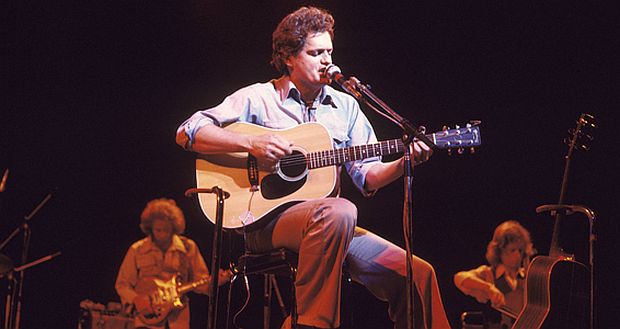
Harry Chapin performing, here with other backing musicians, but sometimes on tour, he performed solo.
Chapin, by many accounts, was a multi-talented artist, with works in film, stage, and poetry in addition to his music career. A documentary film he made in the late 1960s with Jim Jacobs, titled Legendary Champions, was nominated for an Academy Award. And a 1975 musical stage production, The Night That Made America Famous, ran on Broadway for 75 performances and was nominated for two Tony awards. Chapin’s musical legacy includes nine studio albums, two live albums, thirteen singles, and 14 compilation albums. His total record sales were in excess of 16.7 million copies. In December 1987, he was honored at an all-star Carnegie Hall tribute. At that tribute he was also posthumously awarded a Special Congressional Gold Medal for his campaigning on world hunger and other social issues. An album documenting the event, titled Tribute – with performers including Judy Collins, Richie Havens and Bruce Springsteen – was released in 1990.
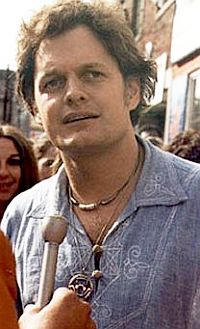
Harry Chapin, undated.
“To talk about Harry Chapin only as a singer-composer,” said Ralph Nader, “is like viewing Theodore Roosevelt as a state assemblyman or Babe Ruth as a pitcher. More than any other entertainer in his generation, Harry was a citizen-artist.” A number of U.S. Senators and members of Congress made floor statements praising Chapin’s policy work. Among these was former Senator Robert Dole (R-KS) who called Chapin “a liberal — and a liberal in the best sense of the word …What he really was committed to was decency and dignity.”
In recent years, Harry’s widow, Sandy, has served as chair of the Harry Chapin Foundation, where she has continued to pursue Harry’s legacy. His son, Josh, has also been involved with the foundation, along with other family members.
For additional stories at this website on music and song history, see the “Annals of Music” category page. Thanks for visiting — and if you like what you find here, please make a donation to help support the research and writing at this website. Thank you. – Jack Doyle
|
Please Support Thank You |
____________________________________
Date Posted: 19 January 2019
Last Update: 10 January 2023
Comments to: jdoyle@pophistorydig.com
Article Citation:
Jack Doyle, “Harry Chapin: Taxi & Beyond,”
PopHistoryDig.com, January 19, 2019.
____________________________________
Sources, Links & Additional Information
Don Heckman, “Harry Chapin Shows His Style In Program at the Bitter End,” New York Times, April 7, 1972, p. 25.
Don Heckman, “America — A One-Hit Phenomenon?,” New York Times, April 30, 1972, p. 28-D.
Henry Edwards, “‘Story Songs’ From Harry Chapin,” New York Times, December 12, 1972, p. 63.
“Chapin is Multi-Talented Man,” The Merciad ( Merceyhurst College, Erie, PA), April 2, 1976, p. 3.
Tony Kornheiser, “Harry Chapin: Words and Music,” New York Times, December 4, 1977.
John Rockwell, “Harry Chapin, Singer, Killed in Crash,” New York Times, July 17, 1981.
“Harry Chapin,” in Holly George-Warren and Patricia Romanowski (eds), The Rolling Stone Encyclopedia of Rock & Roll, Rolling Stone Press, New York, 3rd Edition, 2001, pp. 163-164.
“Harry Chapin,” Wikipedia.org.
Harry Chapin Website (Chapin family)
Carol Strickland, “Harry Chapin: All His Life Was a Circle,” New York Times (N.Y./Region), October 19, 1997.
Alan Grayson, “Harry Chapin on What Made America Famous,” HuffingtonPost.com, Sep-tember 27, 2011.
JC Mosquito, “Almost Hits: Harry Chapin, “Taxi” (1972) and “Sequel” (1980),” Some-thingElseReviews.com, September 10, 2013.
Peter Crigler, “Harry Chapin: Balderdash, Charities & Cab Rides, Perfect Sound Forever,” Furious.com, October 2013.
James R. Hagerty, “Clare MacIntyre-Ross, Woman Who Inspired Song ‘Taxi:’ 1943-2016; Clare MacIntyre-Ross’s Break up with Harry Chapin in the ‘60s Prompted Him to Write Tune,” Wall Street Journal, March 18, 2016.
Peter D. Kramer, “Scarsdale Woman Inspired Harry Chapin’s ‘Taxi’,” The Journal News (lohud.com), March 22, 2016.
“Harry Chapin,” DramaticPublishing.com.
Jennifer Kathleen, “Harry and Clare, Skyying,” Medium.com, March 28, 2016.
Rick Moore, Harry Chapin, “Taxi,” American Songwriter.com, June 20, 2016.
“Harry Chapin Discography,” Wikipedia.org.
“Sniper (song),” Wikipedia.org.
“HarryChapinMusic,” YouTube.com, posted, December 20, 2008.
Ralph Nader and Mark Green, “Harry Chapin Was a Citizen-Artist’,” New York Times, July 26, 1981.
Harry Chapin Music, “Some More Stories: Live At Radio Bremen 1977,” CD or MP3. Click for copy.
“The Essentials, Harry Chapin: Greatest Hits,” Elektra Catalog Group, 2006. Click for CD.
Harry Chapin, “Story Book: Elektra Albums 1972-1978,” 6-CD Box Set, Click for set.
Rick Korn and S.A. Baron, In Plain View Entertainment, “When In Doubt, Do Something: The Harry Chapin Story,” A Documentary Film, 2019-2020.
______________________________
